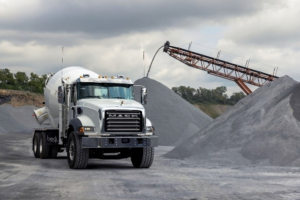February preliminary North American Class 8 truck order figures show a slight increase over January and a substantial decrease from February 2018, two publishers of commercial vehicle data have reported.
ACT Research called February’s increase as “modest.”
FTR said February’s increase was “subdued.”
ACT Research reported 16,900 net Class 8 orders, an increase of 5 percent over January but a decrease of 58 percent year-over-year.
FTR reported 16,700 orders, also with a 5 percent gain over February and a year-over-year decrease of 58 percent. FTR said January and February were the two lowest combined months since October-November 2016.
“February marks the third consecutive month of orders meaningfully below the current rate of build. Over that three-month period, Class 8 orders have been booked at a 194,000 SAAR,” said Kenny Vieth, ACT’s president and senior analyst. “Even though orders are well off their year-ago highs, a trend that is expected to persist through most of this year, we continue to believe that current order weakness has more to do with the very large Class 8 backlog and orders already booked than with the current erosion of the truck-to-freight supply-demand balance.”
FTR reported that several OEM’s are booked solid for 2019 with limited sales slots open for the remainder of the year, so orders are likely to stay in this depressed range until 2020 order boards are opened up. The weaker orders mean that backlogs will tumble for the second straight month, but they remain at historically high levels. Class 8 orders for the past 12 months have now totaled 429,000 units.
“Fleets that need to order trucks are looking for any available open build slot, regardless of brand,” said Don Ake, FTR vice president of commercial vehicles.. “Specifying is also more difficult as the supply chain for parts and components stays tight. Production continues at high rates, as OEMs build those record orders that were placed in 2018.
“The freight market started off the year strong and carriers have still been able to hire enough drivers to expand their fleets. Trucking capacity is not in the chaotic state it was in 2018, but business remains vibrant. Some moderation in freight growth is expected in the second half of the year and this should loosen things up a bit.”
The Trucker News Staff produces engaging content for not only TheTrucker.com, but also The Trucker Newspaper, which has been serving the trucking industry for more than 30 years. With a focus on drivers, the Trucker News Staff aims to provide relevant, objective content pertaining to the trucking segment of the transportation industry. The Trucker News Staff is based in Little Rock, Arkansas.








